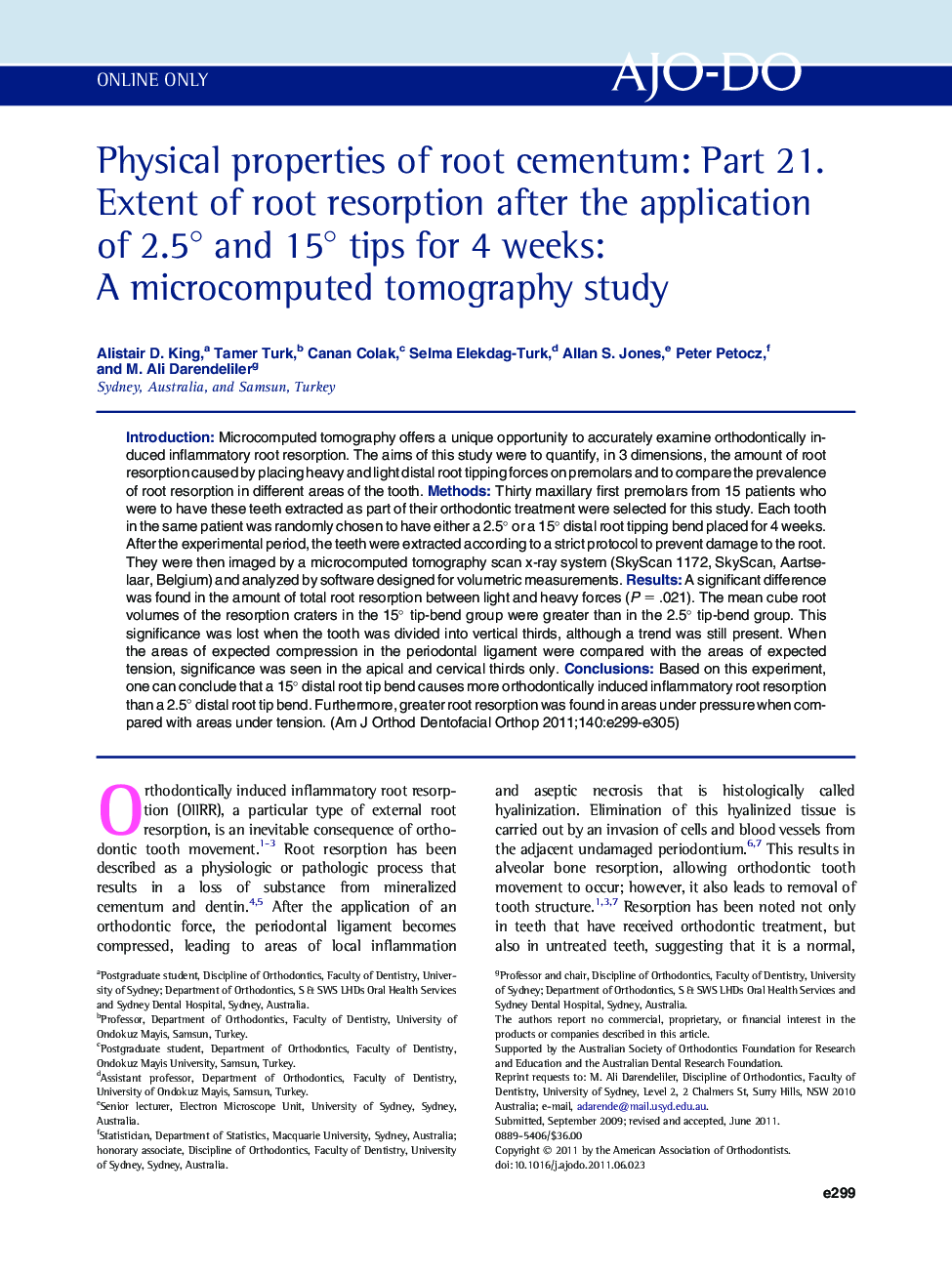| کد مقاله | کد نشریه | سال انتشار | مقاله انگلیسی | نسخه تمام متن |
|---|---|---|---|---|
| 3117164 | 1582734 | 2011 | 7 صفحه PDF | دانلود رایگان |

IntroductionMicrocomputed tomography offers a unique opportunity to accurately examine orthodontically induced inflammatory root resorption. The aims of this study were to quantify, in 3 dimensions, the amount of root resorption caused by placing heavy and light distal root tipping forces on premolars and to compare the prevalence of root resorption in different areas of the tooth.MethodsThirty maxillary first premolars from 15 patients who were to have these teeth extracted as part of their orthodontic treatment were selected for this study. Each tooth in the same patient was randomly chosen to have either a 2.5° or a 15° distal root tipping bend placed for 4 weeks. After the experimental period, the teeth were extracted according to a strict protocol to prevent damage to the root. They were then imaged by a microcomputed tomography scan x-ray system (SkyScan 1172, SkyScan, Aartselaar, Belgium) and analyzed by software designed for volumetric measurements.ResultsA significant difference was found in the amount of total root resorption between light and heavy forces (P = .021). The mean cube root volumes of the resorption craters in the 15° tip-bend group were greater than in the 2.5° tip-bend group. This significance was lost when the tooth was divided into vertical thirds, although a trend was still present. When the areas of expected compression in the periodontal ligament were compared with the areas of expected tension, significance was seen in the apical and cervical thirds only.ConclusionsBased on this experiment, one can conclude that a 15° distal root tip bend causes more orthodontically induced inflammatory root resorption than a 2.5° distal root tip bend. Furthermore, greater root resorption was found in areas under pressure when compared with areas under tension.
Journal: American Journal of Orthodontics and Dentofacial Orthopedics - Volume 140, Issue 6, December 2011, Pages e299–e305